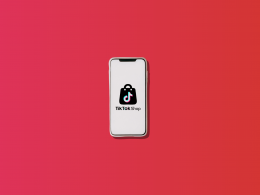As the world continues to evolve, businesses need to keep up with the pace of change to stay relevant and competitive. One of the critical tools that businesses can use to stay ahead of the curve is UPC, which is a barcode system that has been around since 1974 and has played a significant role in modern business operations, particularly in retail and supply chain management.
In this article, we’ll delve into the nature of UPC, the benefits of using this system, and give tips on how to implement it. Stay tuned!
Contents:
1. Universal Product Code: What is UPC used for?
2. Managing transactions efficiently with accounting software
Universal Product Code: What is UPC used for?

A UPC stands for Universal Product Code, which is a barcode symbology (a specific type of barcode) widely used for identifying and tracking products in the retail and manufacturing industries. UPC codes are standardized global identifiers that serve several important purposes:
Product identification
UPCs provide a unique identifier for each product, enabling retailers and manufacturers to distinguish one product from another. This helps in inventory management and accurate tracking of sales.
Pricing and sales
UPCs are often associated with product prices and descriptions in a retailer’s database. When a cashier scans a UPC at the point of sale, it retrieves the product information, pricing, and other relevant details, making the checkout process faster and more accurate.
Inventory management
Retailers use UPCs to keep track of their inventory levels. When a product is sold, the system automatically deducts the quantity from the inventory, helping businesses maintain optimal stock levels and reorder products when necessary.
Sales reporting and analysis
UPCs play a crucial role in generating sales reports and analyzing product performance. Retailers can track which products are selling well, identify slow-moving items, and make informed decisions about their product offerings.
Supply chain management
UPCs are used throughout the supply chain, from manufacturers to distributors to retailers. They help streamline logistics, reduce errors, and improve the efficiency of moving products from production facilities to store shelves.
Anti-counterfeiting
UPCs can be used as part of anti-counterfeiting measures. Authentic products can be easily identified by their legitimate UPC codes, helping to combat the sale of counterfeit goods.
A UPC consists of a series of numbers and a barcode, typically 12 digits in the United States (UPC-A) or 13 digits (including a country code) in the global format (UPC-EAN). The barcode can be scanned with a barcode reader or scanner to quickly retrieve product information from a database.
In short, UPCs are primarily used for product identification, inventory management, sales tracking, and improving the efficiency of retail and supply chain operations. They are a fundamental tool in modern commerce and help ensure accurate and efficient transactions for both businesses and consumers.
Managing transactions efficiently with accounting software
If you want to foster accuracy of your ecommerce transactions data and streamline your operations, consider automating this process with software like Synder Sync. Synder acts as a bridge, synchronizing sales transaction details across various channels and your accounting software. It offers seamless synchronization of transaction data, smooth automatic reconciliation, accurate reporting, and more. Synder does the heavy lifting and ensures your books are clean and audit-ready at any time.
Test Synder during a 15-day free trial or book a spot at a demo session with Synder’s support team to discover more ways it can benefit your ecommerce business. Trust your reconciliation and reporting processes to reliable automated software and ease the strain of tax season!
How to get a UPC code
Implementing UPC requires several steps, including obtaining UPC codes, printing barcodes, and integrating UPC data into a business’s inventory management and point of sale systems. Businesses also need to provide training for their employees to ensure that they can use UPC effectively.
However, UPC implementation can also present challenges as accurate data input and updating are critical to the success of UPC, especially for environments where data management is not a priority.
Getting a UPC (Universal Product Code) for your product involves several steps, and it typically requires you to work with a GS1 member organization, as they are responsible for issuing official UPCs. Here’s a step-by-step guide on how to obtain a UPC for your product:
Step 1. Join GS1: GS1 is a global organization that manages the allocation of UPCs and other barcode standards. You’ll need to become a member of GS1 or its local affiliate in your country. Visit the GS1 website for your country to find the relevant organization.
Step 2. Choose the appropriate membership level: GS1 offers different membership levels, and the cost may vary depending on your location and the number of UPCs you need. Choose the membership level that suits your needs.
Step 3. Provide information about your company and products: When you join GS1, you’ll need to provide detailed information about your company and the products you intend to assign UPCs to. This information helps GS1 maintain a database of registered products.
Step 4. Pay membership fees: Membership fees vary depending on your location and membership level. Be prepared to pay an initial membership fee and, in some cases, annual renewal fees.
Step 5. Receive your GS1 company prefix: Once your membership is approved and your fees are paid, you’ll receive a unique GS1 company prefix. This prefix is the first part of your UPC, and it identifies your company.
Step 6. Assign UPCs to your products: With your GS1 company prefix in hand, you can now create UPCs for your products. You’ll combine your company prefix with a unique product identifier for each item. The structure of a UPC typically includes the company prefix, product identifier, and a check digit.
Step 7. Create barcode graphics: After assigning UPCs to your products, you’ll need to create barcode graphics that incorporate these UPCs. Barcodes are typically generated using specialized software or online tools. Ensure that your barcodes adhere to GS1’s specifications for size and format.
Step 8. Label your products: Once you have the barcode graphics, you can print labels or integrate barcodes into your product packaging. Ensure that the barcode is easily scannable and accurate.
Step 9. Test your barcodes: It’s essential to test your barcodes to ensure they scan correctly. Use barcode scanners or apps to verify that the information encoded in the barcode matches your product data.
Step 10. Market your products: With properly assigned UPCs and barcodes, your products are ready for retail. Retailers will use these barcodes to track inventory and facilitate sales.
Remember that it’s important to follow GS1’s guidelines and standards for barcode usage to ensure compatibility and accuracy throughout the supply chain. Additionally, specific procedures and requirements may vary by country or region, so be sure to consult with your local GS1 organization for precise details on obtaining and using UPCs in your area.
Benefits of using UPC
The first and probably the foremost benefit of UPC is its ability to increase efficiency in inventory tracking. By providing real-time information about inventory levels, businesses can avoid overstocking or understocking products, which can result in lost sales or increased carrying costs.
UPC can improve the performance of the system of inventory tracking in the following ways:
Using UPC for accurate data collection
The use of barcodes eliminates the need for manual data entry, reducing the likelihood of typos and other mistakes that can lead to inaccurate data. This improves data accuracy and ensures that the inventory counts are correct.
Using UPC to get real-time information
UPC provides real-time information about inventory levels, allowing businesses to avoid overstocking or understocking products, which can result in lost sales or increased carrying costs. The real-time inventory tracking helps businesses make informed decisions about purchasing and restocking products.
Using universal product codes for efficient inventory management
By providing a standardized system for identifying and tracking products, UPC facilitates inventory management. Businesses can easily monitor their inventory levels and quickly identify any discrepancies or issues that need to be addressed.
Using UPC for cost savings
UPC can help businesses save costs by reducing the need for manual labor and data entry. UPC can also reduce the likelihood of overstocking or understocking, which can result in financial losses.
Another key benefit of UPCis facilitation of supply chain management and logistics. By providing a standardized system for identifying and tracking products, businesses can better manage their supply chain, ensuring that products are delivered to the right locations at the right time.
Also, UPC enhances the customer experience through easier and faster checkout. Scanning UPC codes at the point of sale speeds up the checkout process, reducing wait times for customers and increasing overall customer satisfaction.
Final words on using the UPC system
In summary, the UPC system is an indispensable tool that underpins contemporary business operations. Its profound impact on inventory management, supply chain logistics, and customer experiences cannot be overstated. Despite the initial challenges associated with implementation and management, the enduring value of UPCs is clear, and their evolution promises to drive further innovation across various sectors.
First and foremost, UPCs have revolutionized inventory management by providing businesses with a precise and efficient means of tracking products. Moreover, UPCs serve as the lingua franca of supply chain management. In an increasingly globalized marketplace, these codes transcend geographical boundaries, enabling the seamless tracking of products across the world. This transparency and traceability not only reduce errors but also expedite the movement of goods, enhancing the efficiency of supply chains and ultimately benefiting consumers.
Looking ahead, the UPC system’s future is bright. As technology advances, so will the capabilities of UPCs, paving the way for innovative applications in retail and supply chain management. From enhanced data analytics to the integration of emerging technologies like the Internet of Things (IoT), UPCs are poised to play an even more pivotal role in the ever-evolving landscape of modern commerce, solidifying their status as a cornerstone of business efficiency and success.
You might also want to check out our article “SKU vs UPC: Difference Between SKUs and UPCs And Why We Need Them”.







.png)
